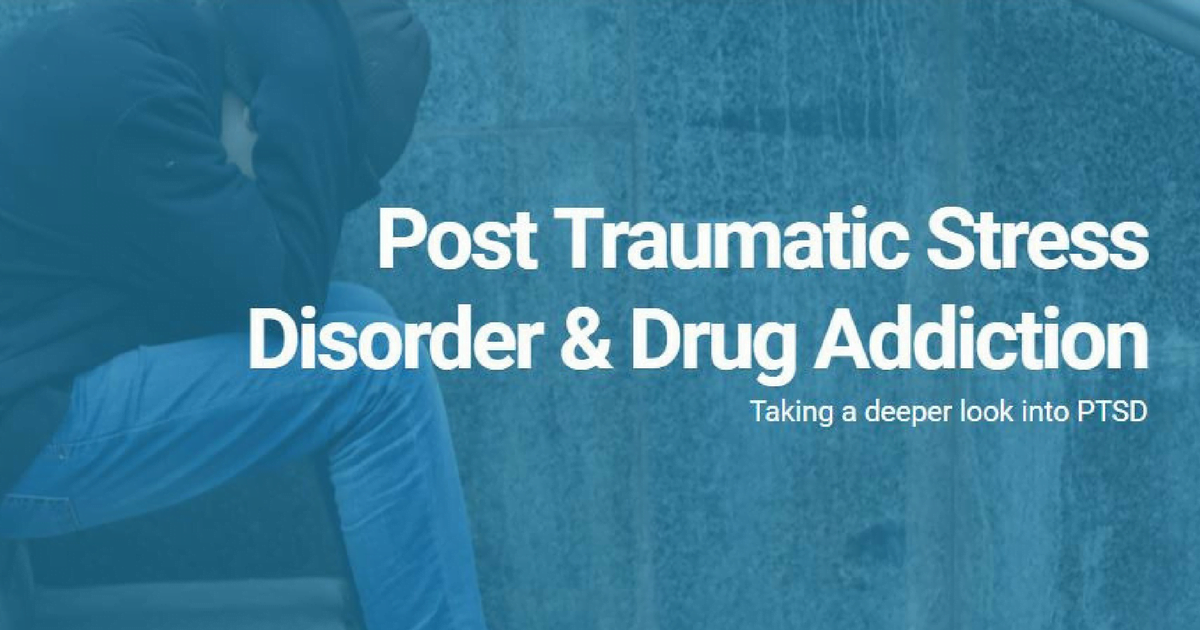

Taking a deeper look into PTSD
PTSD, or post-traumatic stress disorder, is a mental health issue people experience as a result of living through a traumatic event—whether in the form of a near-death experience, natural disaster, car accident or sexual assault. Though a lot of people will experience unpleasant memories, flashbacks and negative emotions immediately following the incident, those who have PTSD will experience these sensations months following the event. Some people even go without experiencing symptoms until six months after the event. This is called delayed onset.
According to the National Center for PTSD (NCP), 1 in 10 men and 2 in 10 women will develop PTSD. In general, there are four types of PTSD symptoms. These symptoms may not occur in exactly the same way for everyone.
Reliving the event: Having thoughts flood your head regarding the traumatic event can happen randomly. When someone is going through them, they can feel as though the experience is happening again, which will make them feel scared. Additionally, people may experience night terrors.
Somebody may remember the traumatic event because of a trigger—a moment that reminds you of the event. This can make living in the real world difficult because the presence of triggers is unavoidable. People with PTSD need to have legitimate coping mechanisms in order to deal with it.
Experiencing more negative thoughts and feelings than before: People who experience PTSD may feel significantly more negative than they did before the event happened. They may lose interest in the activities they participated in originally. They may start having serious trust issues and not engage with the world.
Feeling on edge: For people with PTSD, it might be really difficult to truly live at ease. The NCP defines this as hyperarousal and hypervigilance People may consistently feel as if they are in danger and often have trouble sleeping and concentrating. They might consistently feel angry or irritable.
Trying to keep away from circumstances that remind you of the event: Some people who have PTSD try to avoid the places, activities or thoughts that remind them of the experience(s). This may take on the form of extreme measures. For example, somebody who goes through a car accident may avoid driving because of their experience. At the root of it, people may experience a sense of disconnection from themselves and others as a result of avoiding these scenarios.
What Therapeutic Options Are Available for Those with PTSD?
The three major therapeutic tools used to help people with PTSD are cognitive behavioral therapy, eye movement desensitization and medication. With cognitive behavioral therapy, individuals learn how to change how they think in regards to the trauma they went through. It’s about rewiring automatic responses. They will learn how to identify underlying thoughts that lead to negative emotions and develop tools for dealing with them.
With a therapist, you will learn how to replace these thoughts with more positive, less distressing ones. Sometimes people who go through traumatic events blame themselves for the situation. Trying to get the person to realize that it wasn’t their fault comprises a major part of cognitive behavioral therapy.
One of the premier subsets of cognitive behavioral therapy is exposure therapy. Exposure therapy involves the person dealing with the difficult memories that hold them back in many ways. There are two dimensions of exposure therapy: flooding and desensitization. With desensitization, people will learn how to deal with their less painful memories in small portions. In a flooding experience, the therapist will have the client deal with a lot of painful memories at once to help them learn how to not feel overwhelmed.
People who have PTSD are generally prescribed selective serotonin reuptake inhibitors. They are a type of antidepressant that help people feel less worried and sad. PTSD rewires your brain, creating chemical imbalances. Medications can have the effect of reversing these imbalances. It can seem scary to try a medication, but for a lot of people these have worked effectively.
Eye movement desensitization helps people by allowing them to focus on other stimuli while recounting a memory. This therapy can help change how people react to memories of their trauma.
The other beneficial treatment modalities include group therapy, fitness and dimensions of spirituality. An individual looking to heal from bipolar disorder needs to invoke multiple aspects of care in order to heal from the persistent memories. Living with PTSD can prove taxing, but there are several ways to live effectively and healthily with it.
6 out of 10 men experience at least one trauma in their lives
The Sympathetic and Parasympathetic System and PTSD
The two parts of our brain that regulate autonomous—or automatic responses—are the sympathetic and parasympathetic nervous systems. The sympathetic nervous system deals with responses to the fight or flight condition—the moments when the body is in extreme duress. These responses include a dilation of pupils and blood vessels, increase in heart rate and a halting of digestion. The parasympathetic nervous system works in reverse. It takes care of the body when it is not going through moments of survival.
With somebody who has PTSD, his or her brain consistently exists in fight or flight mode that puts an undue amount of stress on the individual. Healing from PTSD is a lifelong process. There is no cure for the condition, but if managed correctly, people can find relief from the condition.
What is Addiction?
Addiction is a disease. People who are addicted to drugs or alcohol in the presence of a pre-existing condition are not weak or morally bankrupt. They are in need of help. Addiction is not a disease of choice and it robs people of their ability to choose not to use. People’s brains are re-wired in a way that makes them compulsively crave the drug.
People who fall into addiction will generally forego many aspects of their lives they used to participate in. It robs people of life and of purpose. For people with PTSD, addiction can create another beast they have to deal with in their lives. It is a serious disease and people who live with it need treatment in order to recover. Like PTSD, there isn’t a cure for addiction, but with the right treatment practices it can be controlled.
What Kind of Treatment Should I Seek for Addiction?
If you have PTSD and a drug or alcohol addiction, you should consider getting treatment—specifically integrative treatment. Integrative treatment should incorporate medical, therapeutic and holistic resources to help the person heal in every way.
If you choose integrative treatment, you should consider inpatient treatment. In inpatient treatment, you will receive 24-hour care in a facility with people similarly going through recovery. The first step of treatment is a medical detox. During this phase, the medical stuff will expunge the client’s body of all the harmful toxins in it to prepare him/her for the therapeutic dimension of treatment.
In the therapeutic phase, the client will get to participate in group and individual therapy. Both of these aim to help integrate the person back into society, as addiction can isolate people within its grips. These therapy groups also help people learn various coping
mechanisms for dealing with addiction.
The time rehabilitation takes for a person varies from individual-to- individual. However, most people will take anywhere from 60 to 90 days. At the end of treatment, the client will have the option of seeking out aftercare options to keep themselves grounded in recovery.
Aftercare—specifically in the form of sober living facilities—helps people transition easier back into the real world. People who go to treatment are sheltered from the dynamics of everyday life. The real world is full of temptations, which can make it a jarring experience to go from one to the other. Sober living facilities are residential facilities people live in who are fresh out of treatment.
Other aftercare options include outpatient therapy and 12-step meetings. It’s important that people continue to work after going to treatment—especially those with PTSD. Since there isn’t a cure for either PTSD or addiction, the recovery process is a lifelong discovery and maintenance.
About 8 million adults have PTSD during a given year
Do People Self-Medicate?
People with PTSD experience inordinate amounts of stress compared to others. Unfortunately, some of the people dealing with this condition turn toward drugs or alcohol in order to deal with this problem. 20 percent of individuals suffering from an anxiety or mood disorder also battle a substance use disorder, according to the Anxiety and Depression Association of America.
One of the principal factors driving people with PTSD to use drugs or alcohol is the endorphin withdrawal. When someone goes through a traumatic event, their brain produces endorphins, which are neurotransmitters that reduce pain and produce a sense of well-being, to deal with the stress in the moment. Once the moment ends, the body goes through an endorphin withdrawal, which mirrors some of the symptoms of withdrawal from drugs and alcohol.
Naturally, people will try to recapture these feelings by turning toward drugs and alcohol. Drugs and alcohol alter moods, which can make people feel certain things they wouldn’t otherwise feel when they were sober.
The unfortunate reality of the situation is that people who turn toward drugs and alcohol to deal with their PTSD issues can easily develop an addiction. The combination of trauma and drug use doesn’t generally lead to positive situations. With increased use of a drug, the person can become chemically dependent on the drug. They will need more and more of it to get the intended effects.
What Drugs Do People Use to Self-Medicate from PTSD?
According to Alcohol Research & Health, many people who have PTSD will turn to alcohol to replace the feelings brought on by the brain’s naturally produced endorphins. However, the positive effects of alcohol prove only temporary. Alcohol has the ability to make people feel relaxed. It is a depressant and serves as a calming agent, but it also brings on a lot of problems.
If you have PTSD, you may find it difficult to fall asleep or you may wake up often during the night. You may medicate with alcohol in order to feel better. Drinking may also help you deal with terrors that occur during the night. However, drinking only continues the cycle of avoidance found in PTSD. When you avoid the bad memories and dreams, you prolong the PTSD. Avoiding the problems will derail your progress in treatment.
Not only does alcohol make you avoid the problems you need to deal with, it exacerbates the various issues of PTSD. It’s not something people should experiment with if they have PTSD. Swimming in fire water could drown you in flames.
Other drugs people might use to deal with PTSD are Heroin and Marijuana. Both of these drugs can serve as an escape mechanism for people dealing with this disease. It’s important that people with PTSD not look for an escape, but rather deal with reality as much as they can.
5 out of 10 women experience at least one trauma in their lives.
Women with PTSD
Anybody can develop PTSD; however, women are especially susceptible to developing the disease. According to the U.S. Department of Veteran Affairs, 5 out of 10 women experience a traumatic event in their life. Women in general tend to experience different traumas than men.
Women are more likely to experience sexual assault than men and sexual assault is more likely to cause PTSD than many other events. Also, women are more likely to blame themselves for trauma experiences than men.
The symptoms of PTSD generally differ among women and men. For instance, women are more likely to feel jumpy, feel numb and avoid things that make them feel trauma. Men are more likely to experience anger and have trouble controlling it. Women are more likely to feel depressed or anxious.








